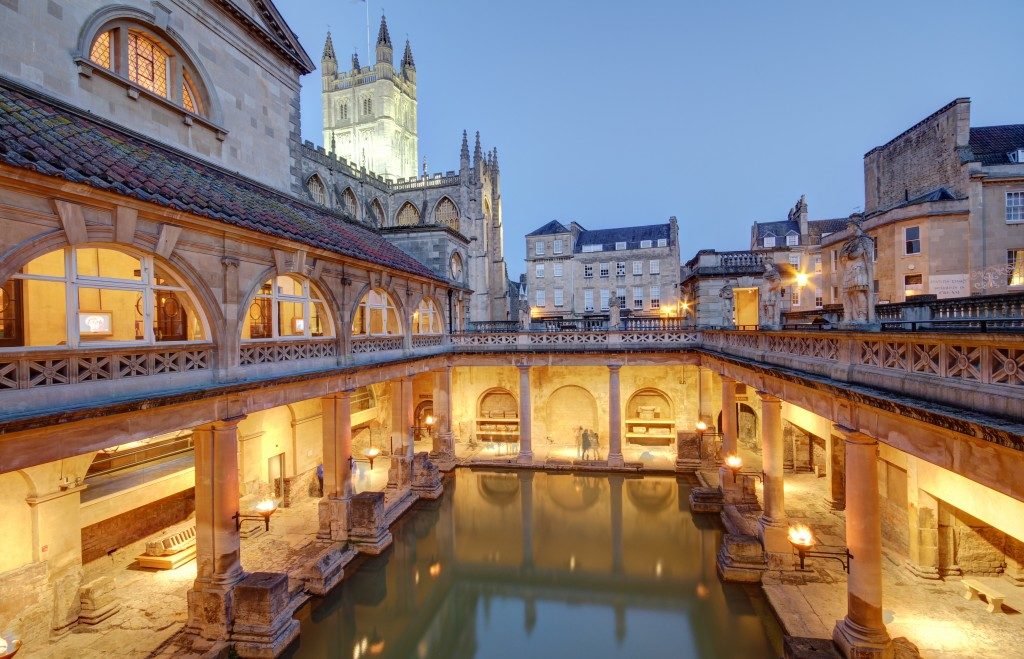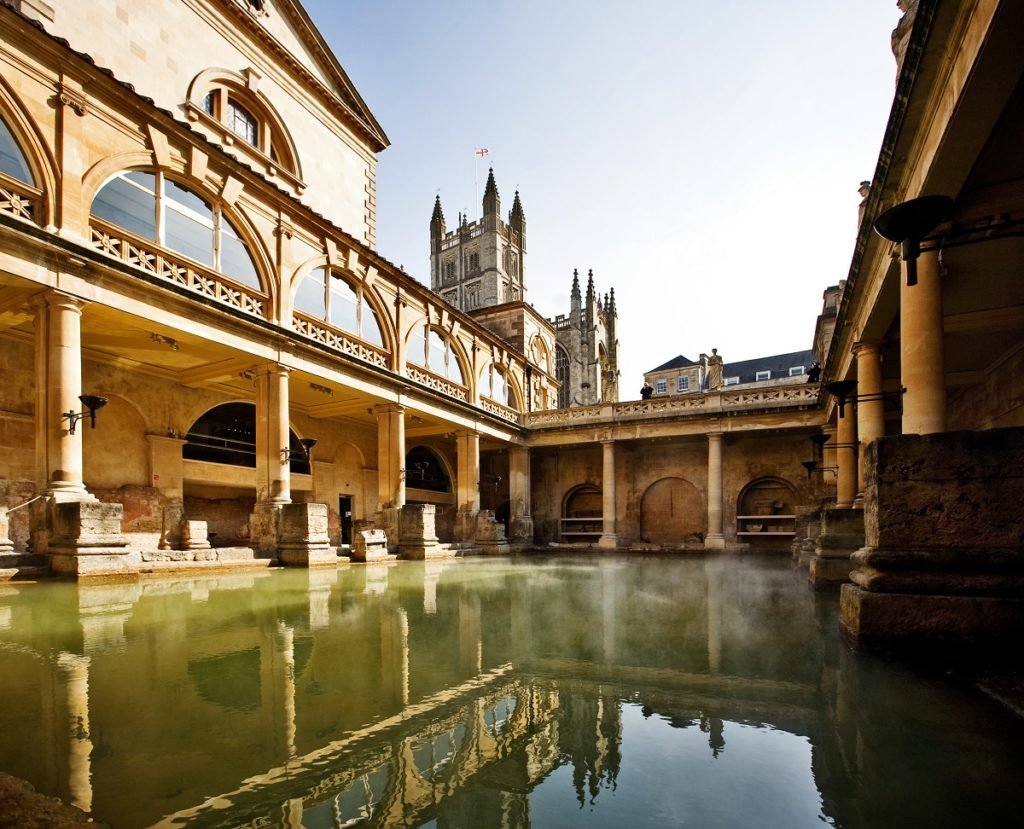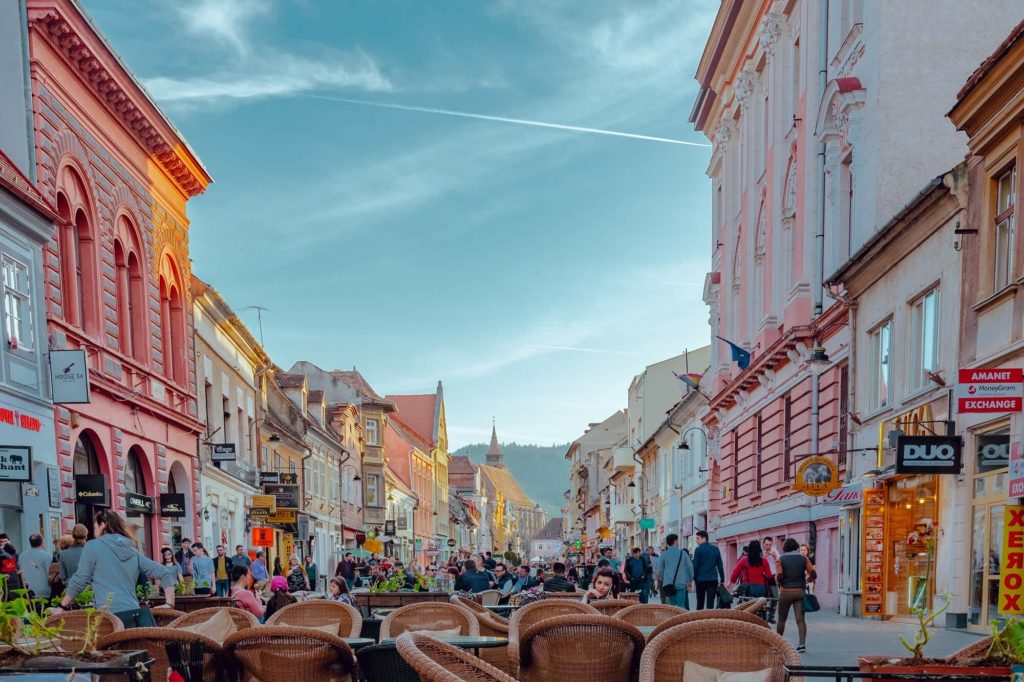Communal bathing facilities were common before the invention and democratization of indoor plumbing. Bathhouses were a central hub of gossip, community, cleanliness, and relaxation. In colder countries, saunas were their bathhouses, designed to raise their core temperature to withstand harrowing conditions.
Today, bathhouses and saunas still exist, some in their traditional form and others in souped up versions of ancient designs.
Bath City, Somerset, England
Book a hotel in the Bath City centre and you’ll be smack dab in the middle of bathing history. The city was created as a thermal spa by the Romans in ancient times and then developed under George III. Today, the city and the Roman baths are hailed as a UNESCO heritage site for its unique value as living proof of the Roman and Georgian eras.
Georgian and Roman aspects of the city remain well preserved. The Roman baths, sites below ground, and the Temple of Sulis Minerva have made significant contributions to the current understanding of the great empire. The Georgian city that was built around it retained a lot of its original body despite modernization. All repairs have been extensively documented.
The Thermae Bath Spa allows residents and tourists to soak in Britain’s only natural, mineral-rich, and warm waters. It is the same water present in the Roman baths, treated for bathing purposes.
Istanbul, Turkey
 Turkish bath is a phenomenon exported to other countries for its rejuvenating benefits. Rather than soaking up, visitors enjoy a steam bath since the time of the Romans. Some of the oldest steam baths or hammam that are still operational are the Cağaloğlu Hamam, Suleymaniye Hammam, Cemberlitas Hammam, and Mihrimah Sultan Hammam.
Turkish bath is a phenomenon exported to other countries for its rejuvenating benefits. Rather than soaking up, visitors enjoy a steam bath since the time of the Romans. Some of the oldest steam baths or hammam that are still operational are the Cağaloğlu Hamam, Suleymaniye Hammam, Cemberlitas Hammam, and Mihrimah Sultan Hammam.
Most bathhouses offer separate steam rooms but others still have mixed bathing rooms. Customers relax in the steam room and perspire freely, then either go into a hotter room or perform a full body wash with cold water. The male or female masseuse then massage their bodies before they are retired to the cooling room.
Hammams are separated into two categories: an Islamic hammam and the Victorian Ottoman bath. Islamic hammams have steamy hot air and the latter offer dry hot air. Cold water bathing in Islamic hammam involves splashing rather than bathing while Victorian Ottoman baths have cold pools for submersion.
Matsuyama, Japan
Matsuyama is home to the rumored inspiration for the giant bathhouse in the animated Ghibli film “Spirited Away,” the Dogo Onsen Honkan. One of Japan’s oldest and most famous onsens or hot springs, the wooden public bathhouse is the main attraction of the Dogo Onsen and has been in operation since 1894.
Due to its age, the bathhouse is undergoing renovations that will take seven years to complete. Part of the original bathhouse will still be open. The Dogo Onsen Honkan has two main indoor baths: the larger public bath called Kami no Yu and the exclusive Tama no Yu. Paying for the highest plan on offer will grant visitors the chance to see the bathing facility reserved for visiting emperors.
Those who still wish to bathe may use a secondary bathhouse called Asuka no Yu and Tsubaki no Yu. Asuka no Yu is a new, modern version of Honkan that offers a public bath, private rooms, and a private bath. Tsubaki no Yu is a smaller facility made in the ’80s that uses the same hot springs as Honkan.
Visiting any of these locations and trying out spots that offer the experience involves a lot of respect. Active baths have unspoken rules of conduct that can be researched in advance or asked at the actual locations. Even when tourists think they know the place, it’s better to ask than commit a major mistake.




